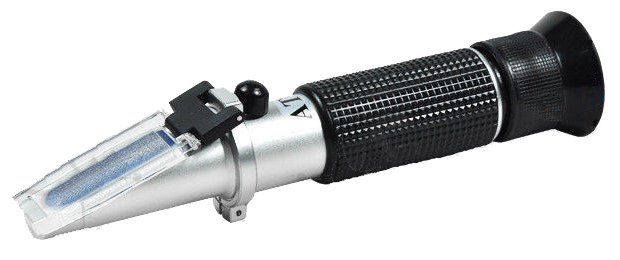Every time you use a honey refractometer, the first thing you should do is to take a honey sample from the hive and put in the middle of the measurement prisms. After that, you will use the eyepiece to look at the sample and determine the Brix measurement.
The light will pass through the sample of honey and this will refract at a particular angle based on the liquid’s density. Sugar will increase the honey’s density so you will know the sugar volume occupied in the honey according to the angle of refraction.
If you are a beekeeper shopping for a refractometer, make sure you consider the following important features:
Table of Contents:
Manual or Digital Type of Instrument
You can go for a digital or manual refractometer. A digital instrument features a button for reading the sample, with the results automatically shown on the tool’s digital screen. On the other hand, a manual instrument requires you to look through the eyepiece to know the Brix measurement.

These two instruments have their own sets of pros and cons. The manual type will give you control over result readings while the digital one gets rid of any human reading mistake. The right type of instrument for you will depend on your own preferences and whether or not you are confident in reading and using the tool.
Measurement Range
Just so you know, refractometers also display parts of the range of measurement and it is important for you to decide on the specific range that you will need. A refractor typically displays a range of sugar content of 58% up to 90%.
The reason for this is because if the refractor shows 0% to 99%, the user will practically find it impossible to get accurate readings because of extremely small scale markings. Every time you measure honey’s sugar content, you will want to check the results in the spectrum’s higher end. A good honey refractor can present a range of more than 90%.
Accuracy of Temperature
When buying this special equipment, you also need to think of the requirements for temperature for testing the honey. A change in temperature can also cause a change in the refractor index. A reliable honey refractor will feature an ATC or automatic temperature compensation feature.
Through the ATC, the tool reports similar value over different temperature ranges, often between 55 to 85 degrees Fahrenheit. It is worthy to invest in a tool that comes with ATC feature to be sure that you will get accurate honey measurement whatever the surrounding temperature might be.
The Bottom Line
The correct technology will give you the assurance that you will never face the risk of accidentally harvesting fermented honey. A refractometer is one of the best tools that all beekeepers should own. All levels of beekeepers, from commercial to hobbyists, can surely take advantage of this device. Good thing that there are many budget-friendly units you can find on the market, with some easy and efficient to read.








